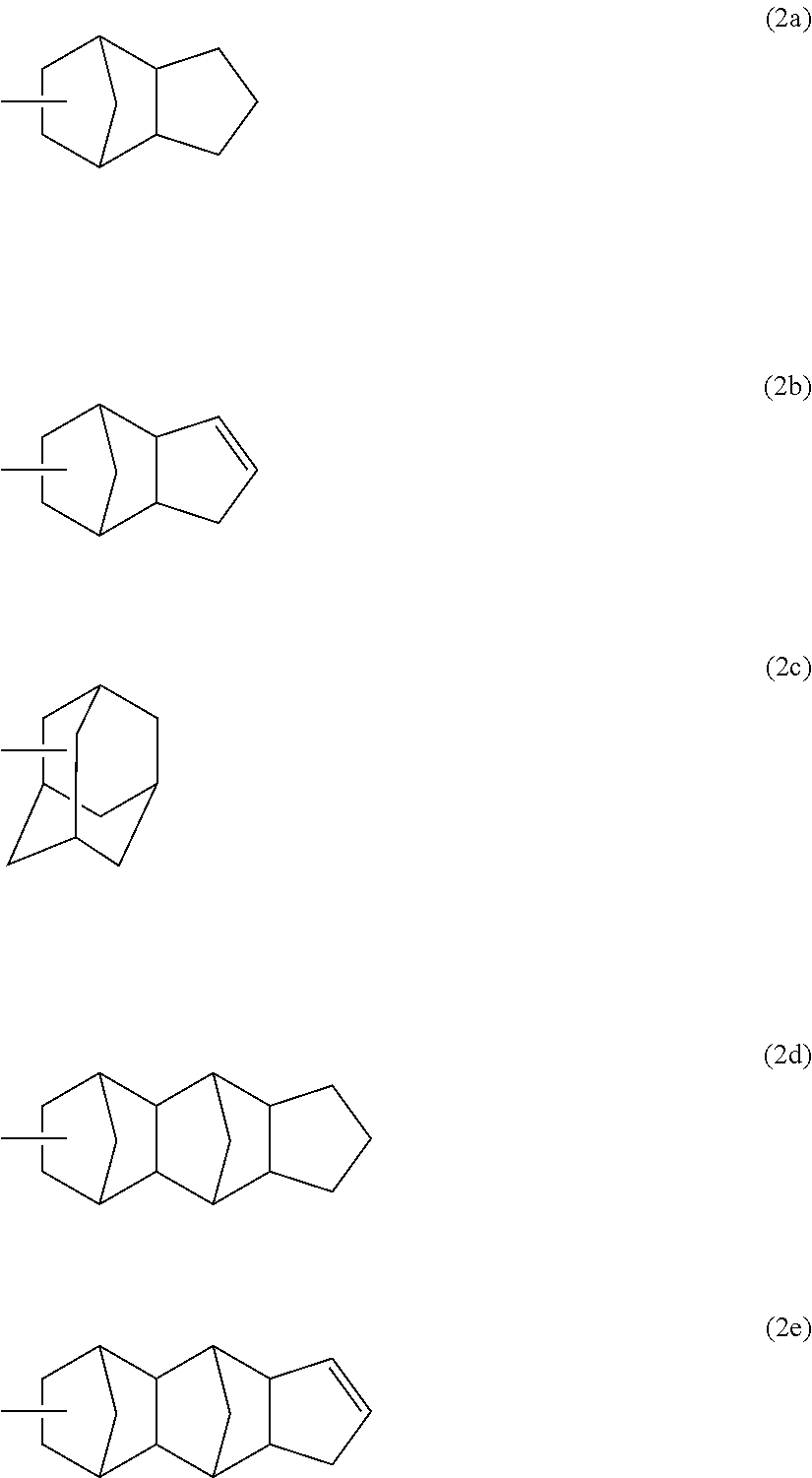Optical pressure-sensitive adhesive sheet
a pressure-sensitive adhesive and optical technology, applied in the direction of film/foil adhesives without carriers, n-vinyl-pyrrolidone polymer adhesives, film/foil adhesives, etc., can solve the problems of low foam or release, transparent pressure-sensitive adhesive sheets, and poor anti-foaming release properties. , excellent anti-white turbidity
- Summary
- Abstract
- Description
- Claims
- Application Information
AI Technical Summary
Benefits of technology
Problems solved by technology
Method used
Image
Examples
preparation example 1
Preparation of Acrylic Polymer (A-1)
[0192]As shown in Table 2, 55 parts by weight of 2-ethylhexyl acrylate (2EHA), 10 parts by weight of N-vinyl-2-pyrrolidone (NVP), 9 parts by weight of methyl methacrylate (MMA) and 26 parts by weight of 2-hydroxyethyl acrylate (HEA) as monomer components, and 200 parts by weight of ethyl acetate as a polymerization solvent were put into a separable flask, followed by stirring for 1 hour while nitrogen gas was introduced thereto. After oxygen in the polymerization system was removed thereby, 0.2 parts by weight of 2,2′-azobisisobutyronitrile as a polymerization initiator was added, and the system was heated to 63° C., followed by reacting for 10 hours. Thereafter, toluene was added thereto to obtain an acrylic polymer solution (referred to as an “acrylic polymer solution (A-1)”) having a solid matter concentration of 30 wt %. The weight average molecular weight of the acrylic polymer (referred to as an “acrylic polymer (A-1)”) in the acrylic polyme...
preparation example 2
Preparation of Acrylic Polymer (A-2)
[0193]As shown in Table 2, the acrylic polymer solution (referred to as an “acrylic polymer solution (A-2)”) having a solid matter concentration of 30 wt % was obtained in the same manner as in Preparation Example 1, except that 59 parts by weight of 2-ethylhexyl acrylate (2EHA), 7 parts by weight of N-vinyl-2-pyrrolidone (NVP), 13 parts by weight of methyl methacrylate (MMA) and 21 parts by weight of 2-hydroxyethyl acrylate (HEA) were used as monomer components. The weight average molecular weight of the acrylic polymer (referred to as an “acrylic polymer (A-2)”) in the acrylic polymer solution (A-2) was 820,000.
preparation example 3
Preparation of Acrylic Polymer (A-3)
[0194]As shown in Table 2, the acrylic polymer solution (referred to as an “acrylic polymer solution (A-3)”) having a solid matter concentration of 30 wt % was obtained in the same manner as in Preparation Example 1, except that 59 parts by weight of 2-ethylhexyl acrylate (2EHA), 15 parts by weight of N-vinyl-2-pyrrolidone (NVP), 9 parts by weight of methyl methacrylate (MMA) and 17 parts by weight of 2-hydroxyethyl acrylate (HEA) were used as monomer components. The weight average molecular weight of the acrylic polymer (referred to as an “acrylic polymer (A-3)”) in the acrylic polymer solution (A-3) was 730,000.
PUM
| Property | Measurement | Unit |
|---|---|---|
| RH | aaaaa | aaaaa |
| RH | aaaaa | aaaaa |
| molecular weight distribution | aaaaa | aaaaa |
Abstract
Description
Claims
Application Information
 Login to View More
Login to View More - R&D
- Intellectual Property
- Life Sciences
- Materials
- Tech Scout
- Unparalleled Data Quality
- Higher Quality Content
- 60% Fewer Hallucinations
Browse by: Latest US Patents, China's latest patents, Technical Efficacy Thesaurus, Application Domain, Technology Topic, Popular Technical Reports.
© 2025 PatSnap. All rights reserved.Legal|Privacy policy|Modern Slavery Act Transparency Statement|Sitemap|About US| Contact US: help@patsnap.com


